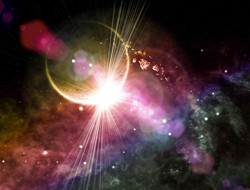Origin of cosmic rays
The origin of cosmic rays has confounded astrophysicists for decades. However, new evidence was revealed by EU-funded scientists of the 'Gamma ray astronomy and the origin of galactic cosmic rays' (GAMMA) study using data from a high energy stereoscopic system (HESS). Collisions among protons generate subatomic particles called neutral pions, which quickly decay into gamma-ray photons. Unlike cosmic rays, gamma rays are unaffected by magnetic fields and can be traced back to their sources. GAMMA researchers looked for these gamma rays to prove cosmic ray creation concept. The gamma rays from individual supernova remnants were estimated under the assumption that these objects are indeed the source of cosmic rays. Results were compared with observations from the HESS Cherenkov telescopes. Located in Namibia, the experiment allows scientists to explore gamma-ray sources with intensities of a few thousandths of the flux from the Crab nebula — the brightest source of gamma rays in the sky. Agreement between HESS data and theoretical predictions served as the starting point for GAMMA researchers to study cosmic rays after they escape from their source. Scientists speculated that cosmic rays are accelerated gradually and over long periods of time by the shells of gas that supernova expel. They estimated gamma ray emissions based on the assumption that massive molecular clouds surround the cosmic ray source. The findings were compared with observations from the supernova remnant W28, in the vicinity of which a molecular cloud is found. Through the comparison between gamma ray data and theoretical predictions, the diffusion characteristics of cosmic rays were determined. In particular, the diffusion coefficient was for the first time defined, something that was not possible with only theoretical calculations. The GAMMA project has provided conclusive evidence that supernovas can generate cosmic rays. However, it remains uncertain whether star explosions cause most cosmic rays. It is also unclear up to what energies supernova remnants can accelerate the particles. These questions are expected to be addressed by the Cherenkov telescope array that is currently under construction.




